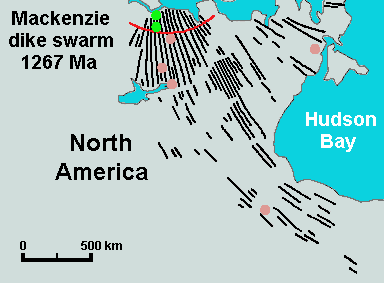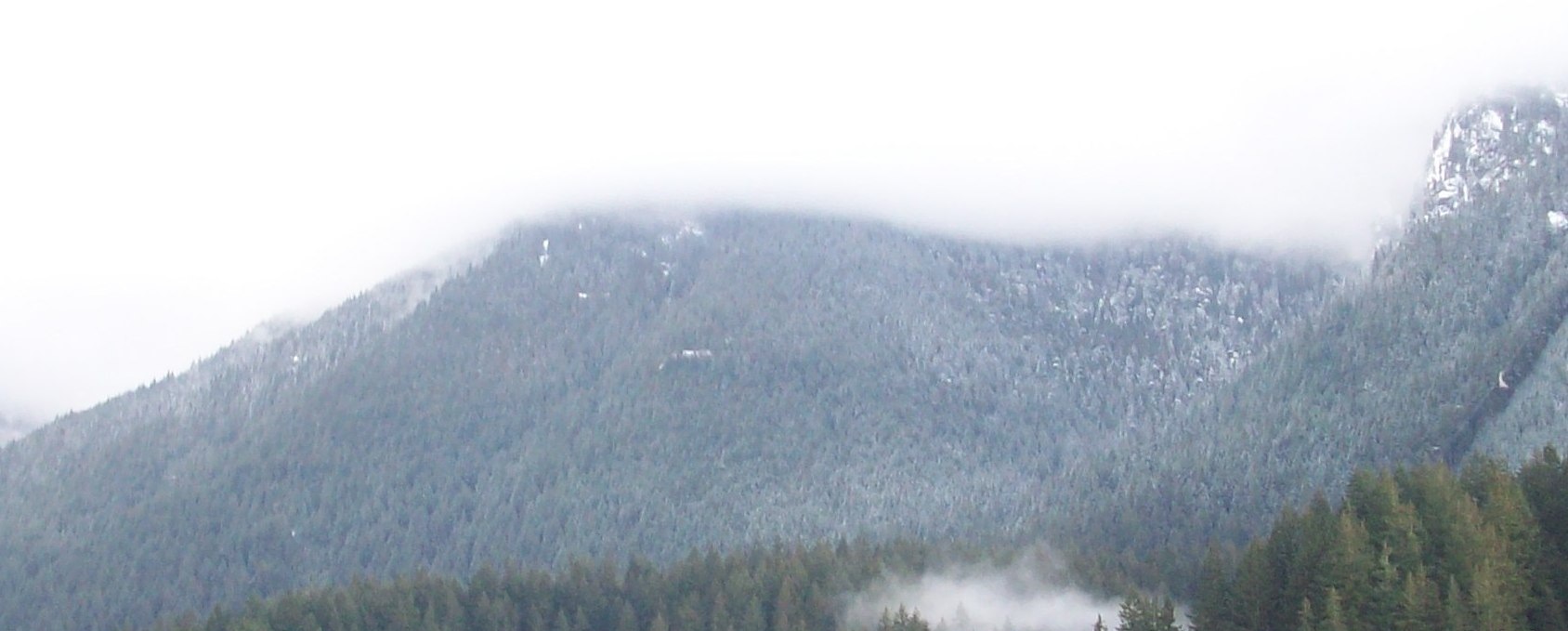|
Mount Skukum Volcanic Complex
The Mount Skukum Volcanic Complex is an early Eocene caldera complex, located 43 km west of Carcross and 32 km northeast of Mount Porsild in the Yukon Territory, Canada. The complex composes the Skukum Group. It is a northeast-trending complex of subaerial volcanic and volcaniclastic rocks covering 140 km2. The Mount Skukum Volcanic Complex was formed when the ancient Kula Plate was subducting under North America during the early Eocene The Eocene ( ) is a geological epoch (geology), epoch that lasted from about 56 to 33.9 million years ago (Ma). It is the second epoch of the Paleogene Period (geology), Period in the modern Cenozoic Era (geology), Era. The name ''Eocene'' comes ... period. See also * Volcanism of Northern Canada * Bennett Lake Volcanic Complex * List of volcanoes of Canada References External links Mount Skukumin the Canadian Mountain encyclopedia. Subduction volcanoes Calderas of Yukon Complex volcanoes Eocene calderas {{Yu ... [...More Info...] [...Related Items...] OR: [Wikipedia] [Google] [Baidu] |
Yukon
Yukon () is a Provinces and territories of Canada, territory of Canada, bordering British Columbia to the south, the Northwest Territories to the east, the Beaufort Sea to the north, and the U.S. state of Alaska to the west. It is Canada’s westernmost territory and the smallest territory by land area. As of the 2021 Canadian census, 2021 census, Yukon is the middle territory in terms of population, but the most densely populated. Yukon has an estimated population of 47,126 as of 2025. Whitehorse, the territorial capital, is the largest settlement. Yukon was History of the Northwest Territories, split from the Northwest Territories by a federal statute in 1898 as the Yukon Territory. The current governing legislation is a new statute passed by the federal Parliament in 2002, the ''Yukon Act''. That act established Yukon as the territory's official name, although Yukon Territory remains in popular usage. Canada Post uses the territory's internationally approved postal abbrevia ... [...More Info...] [...Related Items...] OR: [Wikipedia] [Google] [Baidu] |
Calderas Of Yukon
A caldera ( ) is a large cauldron-like hollow that forms shortly after the emptying of a magma chamber in a volcanic eruption. An eruption that ejects large volumes of magma over a short period of time can cause significant detriment to the structural integrity of such a chamber, greatly diminishing its capacity to support its own roof and any substrate or rock resting above. The ground surface then collapses into the emptied or partially emptied magma chamber, leaving a large depression at the surface (from one to dozens of kilometers in diameter). Although sometimes described as a Volcanic crater, crater, the feature is actually a type of sinkhole, as it is formed through subsidence and collapse rather than an explosion or impact. Compared to the thousands of volcanic eruptions that occur over the course of a century, the formation of a caldera is a rare event, occurring only a few times within a given window of 100 years. Only eight caldera-forming collapses are known to have ... [...More Info...] [...Related Items...] OR: [Wikipedia] [Google] [Baidu] |
Subduction Volcanoes
Subduction is a geological process in which the oceanic lithosphere and some continental lithosphere is recycled into the Earth's mantle at the convergent boundaries between tectonic plates. Where one tectonic plate converges with a second plate, the heavier plate dives beneath the other and sinks into the mantle. A region where this process occurs is known as a subduction zone, and its surface expression is known as an arc-trench complex. The process of subduction has created most of the Earth's continental crust. Rates of subduction are typically measured in centimeters per year, with rates of convergence as high as 11 cm/year. Subduction is possible because the cold and rigid oceanic lithosphere is slightly denser than the underlying asthenosphere, the hot, ductile layer in the upper mantle. Once initiated, stable subduction is driven mostly by the negative buoyancy of the dense subducting lithosphere. The down-going slab sinks into the mantle largely under its own weig ... [...More Info...] [...Related Items...] OR: [Wikipedia] [Google] [Baidu] |
List Of Volcanoes Of Canada
List of volcanoes in Canada is an incomplete list of volcanoes found in mainland Canada, in the Canadian islands and in Canadian waters. All but two provinces, Prince Edward Island and Manitoba, have at least one volcano. Alberta British Columbia New Brunswick Newfoundland and Labrador Northwest Territories Nova Scotia Nunavut Ontario Quebec Saskatchewan Yukon See also * Outline of Canada * Bibliography of Canada * Index of Canada-related articles * Volcanism of Canada ** Volcanism of Northern Canada ** Volcanism of Western Canada ** Volcanism of Eastern Canada ** List of Northern Cordilleran volcanoes * List of mountains in Canada * List of Cascade volcanoes External links Catalogue of Canadian Volcanoes {{Canadian volcanism Canada Volcanoes Volcanoes Volcanoes A volcano is commonly defined as a vent or fissure in the crust of a planetary-mass object, such as Earth, that allows hot lava, volcanic ash, and gases to escape from a ... [...More Info...] [...Related Items...] OR: [Wikipedia] [Google] [Baidu] |
Bennett Lake Volcanic Complex
The Bennett Lake Volcanic Complex (BLVC) is a huge 50-million-year-old extinct caldera complex that spans across the British Columbia-Yukon border in Canada. It is located near the western end of the West Arm of Bennett Lake. The caldera complex is surrounded by granitic rocks containing pendants. It is located near the eastern contact of the Coast Plutonic Complex and the Whitehorse Trough. There are thick series of pyroclastic and epiclastic rocks at the caldera. Remnants of this huge caldera complex are preserved near Bennett Lake in the Coast Mountains. The complex compose the Skukum Group. Formation and eruptive history The Bennett Lake Volcanic Complex was formed when the ancient Kula Plate was subducting under North America during the early Eocene period. [...More Info...] [...Related Items...] OR: [Wikipedia] [Google] [Baidu] |
Volcanism Of Northern Canada
Volcanism in Northern Canada has produced hundreds of volcanic areas and extensive lava formations across Northern Canada. The region's different volcano and lava types originate from different tectonic settings and types of volcanic eruptions, ranging from passive lava eruptions to violent explosive eruptions. Northern Canada has a record of very large volumes of magmatic rock called large igneous provinces. They are represented by deep-level plumbing systems consisting of giant dike swarms, sill provinces and layered intrusions. Plume and rift complexes Vast volumes of basaltic lava covered Northern Canada in the form of a flood basalt event 1,267 million years ago that engulfed the landscape near the Coppermine River southwest of Coronation Gulf in the Canadian Arctic. This volcanic activity built an extensive lava plateau and large igneous province with an area of representing a volume of lavas of at least . With an area of and a volume of , it is larger than the Colu ... [...More Info...] [...Related Items...] OR: [Wikipedia] [Google] [Baidu] |
North America
North America is a continent in the Northern Hemisphere, Northern and Western Hemisphere, Western hemispheres. North America is bordered to the north by the Arctic Ocean, to the east by the Atlantic Ocean, to the southeast by South America and the Caribbean Sea, and to the south and west by the Pacific Ocean. The region includes Middle America (Americas), Middle America (comprising the Caribbean, Central America, and Mexico) and Northern America. North America covers an area of about , representing approximately 16.5% of Earth's land area and 4.8% of its total surface area. It is the third-largest continent by size after Asia and Africa, and the list of continents and continental subregions by population, fourth-largest continent by population after Asia, Africa, and Europe. , North America's population was estimated as over 592 million people in list of sovereign states and dependent territories in North America, 23 independent states, or about 7.5% of the world's popula ... [...More Info...] [...Related Items...] OR: [Wikipedia] [Google] [Baidu] |
Subduction
Subduction is a geological process in which the oceanic lithosphere and some continental lithosphere is recycled into the Earth's mantle at the convergent boundaries between tectonic plates. Where one tectonic plate converges with a second plate, the heavier plate dives beneath the other and sinks into the mantle. A region where this process occurs is known as a subduction zone, and its surface expression is known as an arc-trench complex. The process of subduction has created most of the Earth's continental crust. Rates of subduction are typically measured in centimeters per year, with rates of convergence as high as 11 cm/year. Subduction is possible because the cold and rigid oceanic lithosphere is slightly denser than the underlying asthenosphere, the hot, ductile layer in the upper mantle. Once initiated, stable subduction is driven mostly by the negative buoyancy of the dense subducting lithosphere. The down-going slab sinks into the mantle largely under its own ... [...More Info...] [...Related Items...] OR: [Wikipedia] [Google] [Baidu] |
Skukum Group
The Skukum Group is a 55-million-year-old volcanic group in northern British Columbia and southern Yukon, Canada, approximately 140 km2 in size. The group is encircled by the Watson and Wheaton rivers. It is part of the larger Sloko Volcanic Province, which encompasses part of southern Yukon and Alaska as well as northwestern British Columbia, ending around the Stikine River. Andesite of the Skukum Group hosts the Mount Skukum gold deposit southwest of Whitehorse. See also *Volcanism of Canada *Volcanism of Western Canada *List of volcanoes in Canada *Skookum Skookum is a Chinook Jargon word that has been in widespread historical use in British Columbia and the Yukon, as well as the Pacific Northwest. It has a range of meanings, commonly associated with an English translation of ''strong'' or ''monstr ... References Calderas of British Columbia Calderas of Yukon Chinook Jargon place names Atlin District Eocene calderas Polygenetic volcanoes Volcanic groups Geologic ... [...More Info...] [...Related Items...] OR: [Wikipedia] [Google] [Baidu] |
Coast Mountains
The Coast Mountains () are a major mountain range in the Pacific Coast Ranges of western North America, extending from southwestern Yukon through the Alaska Panhandle and virtually all of the British Columbia Coast, Coast of British Columbia south to the Fraser River. The mountain range's name derives from its proximity to the sea coast, and it is often referred to as the Coast Range. The range includes volcanic and non-volcanic mountains and the extensive ice fields of the Pacific Ranges, Pacific and Boundary Ranges, and the northern end of the volcano, volcanic system known as the Cascade Volcanoes. The Coast Mountains are part of a larger mountain system called the Pacific Coast Ranges or the Pacific Mountain System, which includes the Cascade Range, the Insular Mountains, the Olympic Mountains, the Oregon Coast Range, the California Coast Ranges, the Saint Elias Mountains and the Chugach Mountains. The Coast Mountains are also part of the American Cordilleraa Spanish term for ... [...More Info...] [...Related Items...] OR: [Wikipedia] [Google] [Baidu] |
Mount Porsild
Mount is often used as part of the name of specific mountains, e.g. Mount Everest. Mount or Mounts may also refer to: Places * Mount, Cornwall, a village in Warleggan parish, England * Mount, Perranzabuloe, a hamlet in Perranzabuloe parish, Cornwall, England People * Mount (surname) * William L. Mounts (1862–1929), American lawyer and politician Computing and software * Mount (computing), the process of making a file system accessible * Mount (Unix), the utility in Unix-like operating systems which mounts file systems Books * ''Mount!'', a 2016 novel by Jilly Cooper Displays and equipment * Mount, a fixed point for attaching equipment, such as a hardpoint on an airframe * Mounting board, in picture framing * Mount, a hanging scroll for mounting paintings * Mount, to display an item on a heavy backing such as foamcore, e.g.: ** To pin a biological specimen, on a heavy backing in a stretched stable position for ease of dissection or display ** To prepare dead animal ... [...More Info...] [...Related Items...] OR: [Wikipedia] [Google] [Baidu] |



